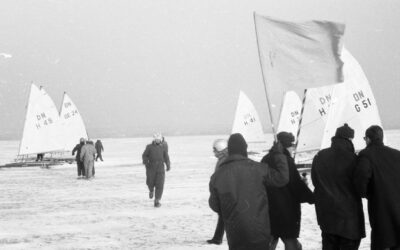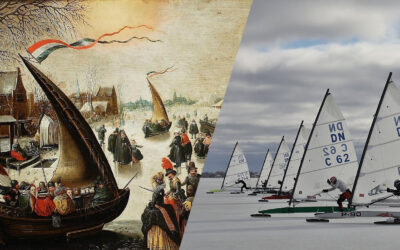DN Regatta History
European Icesailing through the Decades
Flashback Friday: The first European DN Championship and Icesailing in the 1960s
With less than a month to go until the 50. Gold Cup DN World and European Championships, we continue our journey through the decades with the first European Championship and the following 1960s. Read the previous article on the Birth of the Sport and the Origin of the...
Flashback Friday: The beginning of icesailing and the Blue Streak 60
Dear Fellow Icesailors, As the year is coming to an end we would like to start a different type of countdown: 2024 will mark the 50th occasion that the DN Class celebrates international competition by organising the Gold Cup DN World and European Championships. In...
DN Perpetual Trophies
|
|
World Championship 1st Place – The “Gold Cup”Donated by Jim Redding, USA |
|
|
World Championship 2nd Place – Commodore Jim Redding Memorial TrophyDonated by Art Teutsch and Bill Connell |
|
|
World Championship 3rd PlaceDonated by Wim Van Acker, Netherlands |
|
|
World Championship 4th PlaceDonated by Evert Vanderberg US4 of Michiganin Memory of Wim Van Acker H31 and Jan Eindhoven H55 |
|
|
World Championship 5th PlaceDonated by Stan Whorwood, Canada |
|
|
World Championship 6th Place |
|
|
World Championship 1st Place in Silver Fleet – The “Silver Cup”Donated by Leon LeBeau, USA |
|
|
World Championship Women’s Trophy |
|
|
World Championship Women’s Trophy 2nd Place |
|
|
World Championship Women’s Trophy 3rd Place |
|
|
World Championship Senior Trophy – Best over 60Donated by the Skeeter Ice Boat Club, Williams Bay, Wisconsin, USA |
|
|
World Championship Junior TrophyDonated by Robert Pegel, USA |
|
|
European Championship 1st Place |
|
|
European Championship 2nd Place |
|
|
European Championship 3rd Place |
|
|
European Championship 4th Place |
|
|
European Championship 5th Place |
|
|
European Championship Women’s Trophy |
|
|
European Championship Women’s Trophy 2nd Place |
|
|
European Championship Women’s Trophy 3rd Place |
|
|
European Championship 1st Place in the First Race of Gold Fleet |
|
|
European Championship – Best over 50 |
|
|
European Championship – Best over 60 |
|
|
European Championship – Best Junior |
|
|
EuroCup – 1st Place – The “European Trophy” |
|
|
EuroCup – 2nd Place |
|
|
EuroCup – 3rd Place |


















